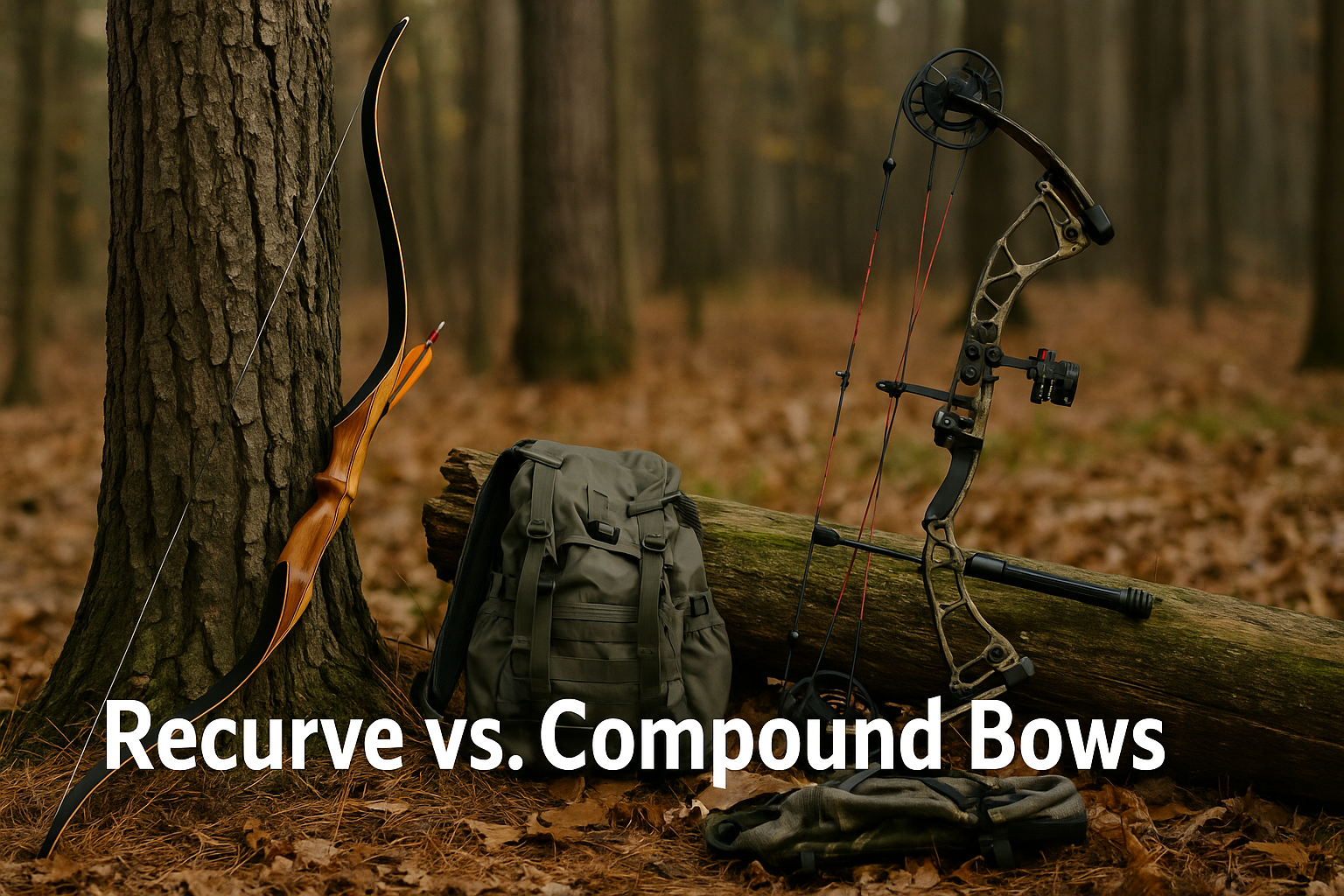
Bowhunting has always carried a sense of tradition, skill, and closeness to nature that firearms simply cannot replicate. Yet within the world of archery, hunters often face one critical choice before stepping into the woods: Should I hunt with a recurve vs. compound bows?
This debate has existed since the modern compound bow revolutionized archery in the 1960s. On one side, you have traditionalists who swear by the simplicity and instinct-driven shooting of recurves. On the other, you have hunters who value the speed, precision, and mechanical efficiency of compound bows.
So, which is truly better for hunting? The short answer: it depends on your hunting goals, terrain, and skill level. But the long answer requires a deep dive into the features, pros and cons, and real hunting performance of each bow type. That’s exactly what this article will cover in detail.
Table of Contents
The recurve bow is one of the oldest bow designs, tracing its roots back thousands of years. Cultures from the Mongols to Native Americans relied on recurve-style bows for both hunting and warfare. Its defining characteristic is the way the limbs curve away from the archer at the tips, creating more energy storage compared to a straight-limbed longbow.
Hunters often choose recurves because of the raw hunting challenge. You have to get close—really close—to your prey, making every successful shot more rewarding. Many hunters describe it as “hunting the way our ancestors did,” providing a primal connection to the land and the game pursued.
The compound bow is a modern innovation created to solve two major hunting challenges: holding heavy draw weights for long periods and improving arrow speed. By using cams, pulleys, and cables, compound bows allow hunters to pull a heavy draw weight but hold only a fraction of that weight at full draw. This is called let-off.
Compound bows are the go-to choice for modern bowhunters, especially for big game. They are more forgiving, accurate, and effective at longer ranges. For hunters in areas with wary game (like elk in open fields), a compound bow provides a clear edge.
Let’s break down how these bows perform in five major hunting categories.
Winner: Compound Bow
Winner: Compound Bow
Winner: Recurve Bow
Winner: Compound Bow
Winner: Compound Bow
When hunting with a recurve, success comes down to stealth and shot placement. You’ll need to stalk closer than most compound hunters.
Best Use: Whitetail deer in wooded areas, turkey hunting, or hunters seeking the traditional challenge.
A compound bow offers a technological edge that translates to more opportunities in the field.
Best Use: Versatile for almost any game, from deer to moose, across diverse terrains.
If budget matters, recurves win. But if performance is your top priority, compounds justify their price.
Hunting ethically means minimizing suffering and ensuring a quick, clean kill.
For new hunters, a compound bow provides faster success, higher confidence, and ethical shooting advantages.
However, if you want to truly develop archery skill, patience, and instinctive aiming, a recurve bow offers a rewarding journey.
When comparing recurve vs. compound bows for hunting, the truth is that neither bow is universally better; the choice depends entirely on your goals and style as a hunter. Recurve bows offer a traditional, instinctive experience that connects you more deeply with the heritage of archery. They demand patience, practice, and the willingness to get close to your prey, rewarding hunters with a raw, primal satisfaction that modern equipment cannot replicate. Compound bows, on the other hand, provide power, speed, and precision that make them highly effective for larger game and longer shots. With their mechanical advantage and accuracy, they give hunters an edge in nearly any environment, especially when success is the top priority. In the end, both bows are capable of ethical and successful hunting when mastered. What matters most is choosing the bow that resonates with your personal hunting philosophy, dedicating yourself to practice, and embracing the experience of the hunt itself.
Choosing the best tree stands under $300 is one of the smartest investments a hunter…
When dark clouds roll in and rain starts falling, many hunters pack up their gear…
Competitive shooting requires skill, precision, and the right equipment. Whether you're a seasoned competitor or…
The world of archery is undergoing an exciting evolution. What once were purely mechanical tools…
Welcome to the latest 2025 hunting-season guide, tailored for readers of TheShootingGears. Whether you’re carving…
Technology is revolutionizing the way we hunt and shoot. From GPS mapping and ballistics calculators…
This website uses cookies.